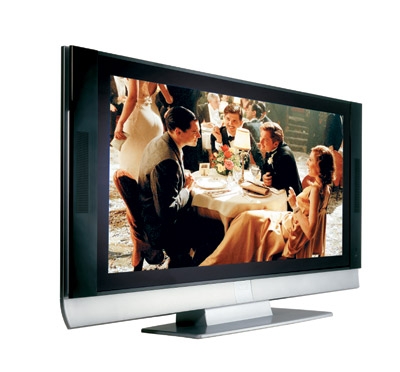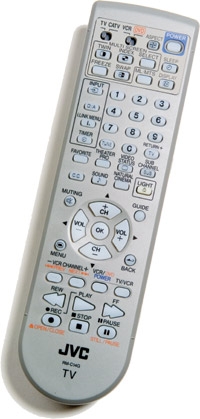Plasma for Less Page 2

|
SETUP Since the JVC has an antenna input for grabbing local digital and high-def broadcasts, my first order of business was to plug in an antenna and let the TV's Channel Search function rip. The JVC easily grabbed most of the digital channels in my area. The Fox affiliate was the lone holdout, but most HDTVs I've tested have had a problem with it.
I initially had my Scientific Atlanta HD cable box plugged into the set's HDMI input. But the TV proved to have a sharper picture when I used its component-video input for high-def, and test patterns confirmed that using the HDMI input resulted in a softening of the picture. I'd recommend sticking with the component-video inputs. Suprisingly, there are no custom picture memories for each of the TV's inputs, a common (and valuable) feature today.
PICTURE QUALITY After making service-menu adjustments to the picture, I dropped The Aviator into my DVD player. In the scene of the premiere party for Howard Hughes's 1930 film Hell's Angels, colors looked clean, and there was good sense of shadow depth and detail. I could see slight variations in the black shades of the men's tuxedos, and the evening gowns worn by the starlets had a rich, vivid appearance. A later scene where Hughes test pilots a new plane didn't fare as well. The picture had punchy contrast, but the highlights had a "burned-out" appearance, and the normally wispy clouds looked ragged and patchy.
 The JVC's clean, natural color and punchy contrast was also evident when I watched HDTV programs like HBO's Six Feet Under. An opening shot of a mobile home in the California desert showed sharp detail in the exterior decorations and plants. In a later scene where Nate studies his face in the mirror while shaving, his skin looked mostly natural, with only a hint of redness.
The JVC's clean, natural color and punchy contrast was also evident when I watched HDTV programs like HBO's Six Feet Under. An opening shot of a mobile home in the California desert showed sharp detail in the exterior decorations and plants. In a later scene where Nate studies his face in the mirror while shaving, his skin looked mostly natural, with only a hint of redness.
BOTTOM LINE JVC's PD-42X795 is a sharp-looking plasma TV with a solid feature set and decent picture quality, especially for HDTV. But the occasionally patchy image, lack of a custom picture memory for each input, and softened resolution when using an HDMI connection keep it from getting an unqualified recommendation.













































